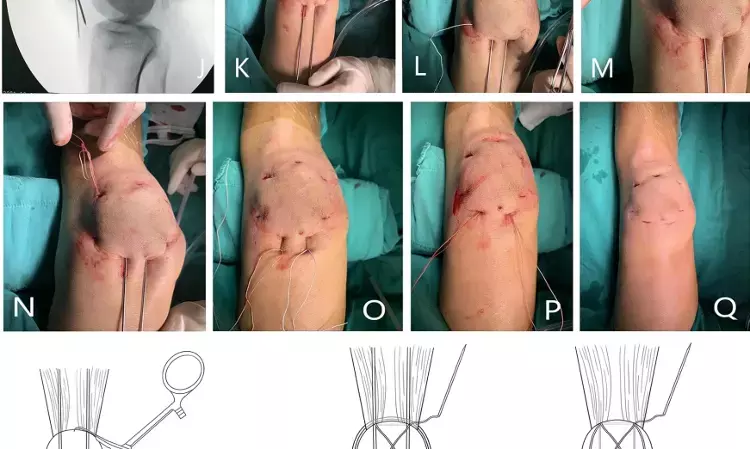- Home
- Medical news & Guidelines
- Anesthesiology
- Cardiology and CTVS
- Critical Care
- Dentistry
- Dermatology
- Diabetes and Endocrinology
- ENT
- Gastroenterology
- Medicine
- Nephrology
- Neurology
- Obstretics-Gynaecology
- Oncology
- Ophthalmology
- Orthopaedics
- Pediatrics-Neonatology
- Psychiatry
- Pulmonology
- Radiology
- Surgery
- Urology
- Laboratory Medicine
- Diet
- Nursing
- Paramedical
- Physiotherapy
- Health news
- Fact Check
- Bone Health Fact Check
- Brain Health Fact Check
- Cancer Related Fact Check
- Child Care Fact Check
- Dental and oral health fact check
- Diabetes and metabolic health fact check
- Diet and Nutrition Fact Check
- Eye and ENT Care Fact Check
- Fitness fact check
- Gut health fact check
- Heart health fact check
- Kidney health fact check
- Medical education fact check
- Men's health fact check
- Respiratory fact check
- Skin and hair care fact check
- Vaccine and Immunization fact check
- Women's health fact check
- AYUSH
- State News
- Andaman and Nicobar Islands
- Andhra Pradesh
- Arunachal Pradesh
- Assam
- Bihar
- Chandigarh
- Chattisgarh
- Dadra and Nagar Haveli
- Daman and Diu
- Delhi
- Goa
- Gujarat
- Haryana
- Himachal Pradesh
- Jammu & Kashmir
- Jharkhand
- Karnataka
- Kerala
- Ladakh
- Lakshadweep
- Madhya Pradesh
- Maharashtra
- Manipur
- Meghalaya
- Mizoram
- Nagaland
- Odisha
- Puducherry
- Punjab
- Rajasthan
- Sikkim
- Tamil Nadu
- Telangana
- Tripura
- Uttar Pradesh
- Uttrakhand
- West Bengal
- Medical Education
- Industry
Closed reduction high-strength sutures have good clinical efficacy in treating transverse patella fractures

Tension band wiring (TBW) is probably the most commonly used and effective surgical method. Still, inevitably, it has the disadvantages of protruding discomfort, soft tissue irritation, and the need for secondary surgical removal.
Liben Huanget et al used a closed repositioning method combined with high-strength sutures to overcome the problem of protruding implants without affecting stable fixation. They conducted a study to investigate the clinical efficacy of closed reduction high-strength sutures combined with Nice knots in treating transverse patella fractures.
The authors retrospectively analyzed the clinical data of 28 patients who underwent surgery for transverse patella fractures. Twelve cases of the study group were treated with closed reduction high-strength sutures combined with Nice knots, and 16 cases in the control group were treated with tension band wiring. The study has been published in ‘Indian Journal of Orthopaedics.’
Two or three 1.5 or 2.0 mm clincher pins were placed percutaneously in the parallel longitudinal direction as temporary fixation after reduction of transverse fracture patella. Next, two lateral and two medial incisions were made on each side of the patella at the superior and inferior patellar poles, respectively. Next, through four small incisions, the Ultrabraid NO.2 (Smith & Nephew, USA) was looped and "8" fixed, superiorly through the quadriceps; inferiorly through the inferior pole of the patella. Finally, the Nice knot was tied in the patellar epiphysis and embedded in soft tissue. Next, the kyphosis pin was pulled out in sequence, and the knot was then tied longitudinally through the bone tunnel through the skin and tightened using Nice. After bone fixation was completed, intraoperative fixation stability was assessed by flexing the knee to 90 degrees. . The incision was finally sutured and bandaged.
Observations included patellar healing, follow-up knee mobility with Böstman score, Lysholm score, surgical data, postoperative complications, and secondary surgery rate.
Key findings of the study were:
• No statistically significant difference was observed between the two groups in the Patient demographic data, with a mean follow-up of 13.14±1.58 months.
• There was no delayed healing or deep infection in the two groups.
• In the control group, 2 cases of internal fixation failure and 1 case of superficial infection were observed.
• The differences in mean fracture healing time, follow-up Böstman score, Lysholm score and knee mobility between the two groups were not statistically different.
• The differences were statistically significant for the duration of surgery, Incision length, intraoperative bleeding and the secondary surgery rate was lower in the study group.
The authors concluded that – “ Closed reduction high-strength sutures have good clinical efficacy in treating transverse patella fractures, with the advantages of shorter duration of surgery and Incision length, less intraoperative bleeding and no secondary removal.”
Further reading:
Closed Reduction and High Strength Sutures for Transverse Patella Fractures: A Retrospective Analysis, Liben Huang et al, Indian Journal of Orthopaedics (2023) 57:571–576, https://doi.org/10.1007/s43465-023-00843-4
MBBS, Dip. Ortho, DNB ortho, MNAMS
Dr Supreeth D R (MBBS, Dip. Ortho, DNB ortho, MNAMS) is a practicing orthopedician with interest in medical research and publishing articles. He completed MBBS from mysore medical college, dip ortho from Trivandrum medical college and sec. DNB from Manipal Hospital, Bengaluru. He has expirence of 7years in the field of orthopedics. He has presented scientific papers & posters in various state, national and international conferences. His interest in writing articles lead the way to join medical dialogues. He can be contacted at editorial@medicaldialogues.in.
Dr Kamal Kant Kohli-MBBS, DTCD- a chest specialist with more than 30 years of practice and a flair for writing clinical articles, Dr Kamal Kant Kohli joined Medical Dialogues as a Chief Editor of Medical News. Besides writing articles, as an editor, he proofreads and verifies all the medical content published on Medical Dialogues including those coming from journals, studies,medical conferences,guidelines etc. Email: drkohli@medicaldialogues.in. Contact no. 011-43720751


